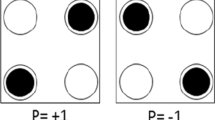Abstract
QCA (Quantum-dot Cellular Automata) is an alternative technology for CMOS that has a low power consumption and high density. QCA extensively supports the new plans in the field of nanotechnology. Applications of QCA technology as an alternative method for CMOS technology in nano-scale have a hopeful future. This paper presents the successful design, implementation and simulation of 2 to 1, 4 to 1 and 8 to 1 multiplexer with the minimum area as compared to the previous models in QCA technology. In this paper, by means of 4 to 1 multiplexers including D-Flip Flop (D-FF) structure in QCA, we present an 8-bit universal shift register. The structure of the 8-bit universal register is extendable to 16-bit, 32-bit and etc. In this paper, the successful simulation of 2 to 1, 4 to 1 and 8 to 1 multiplexers, including D-FF and finally 8-bit universal register structure in QCADesigner is provided. The multiplexers and D-FF presented in this paper have the minimum complexity, area and delay compared to the previous models. In this paper, the implementation of 8-bit universal shift register, by means of 4 to 1 multiplexers and D-FF are presented in QCA technique which have the minimum complexity and delay. In the proposed design of the 8-bit universal shift register, the faults are likely to occur at 2 to 1 multiplexers and D-FF. In this article, 2 to 1 multiplexers and D-FF are investigated from the cell missing and possible defects. Considering the pipeline being the virtue of QCA, the 8-bit universal shift register has a high speed function. This 8-bit universal shift register may be used in the high speed processors as well as cryptography circuits.




















Similar content being viewed by others
References
Huang, J., Lombardi, F.: Design and test of digital circuits by quantum-dot cellular automata. Boston, MA (2008)
Lent, C.S., Tougaw, P.D., Porod, W., Bernstein, G.H.: Quantum cellular automata. Nanotechnology 4, 49–57 (1993)
Lent, C.S., Tougaw, P.D.: A device architecture for computing with quantum dots. Proc. IEEE 85, 541–557 (1997)
Mardiris, V., Mizas, C.H., Fragidis, L., Chatzis, V.: Design and simulation of a QCA 2 to 1 multiplexer. In: 12th WSEAS International Conference on COMPUTERS, Heraklion, Greece, pp. 572–576 (2008)
Mardiris, V.A., Karafyllidis, I.G.: Design and simulation of modular 2n to 1 quantum-dot cellular automata (QCA) multiplexers. Int. J. Circuit Theory Appl. 38, 771–785 (2010)
Roohi, A., Khademolhosseini, H., Sayedsalehi, S., Navi, K.: A novel architecture for quantum-dot cellular automata multiplexer. Int. J. Comput. Sci. Issues 8, 55–60 (2011)
Amlani, I., Orlov, A.O., Bernstein, G.H., Lent, C.S., Snider, G.L.: Realization of a functional cell for quantum-dot cellular automata. Science 227, 928–930 (1997)
Amlani, I., Orlov, A.O., Toth, G., Bernstein, G.H., Lent, C.S., Snider, G.L.: Digital logic gate using quantum-dot cellular automata. Science 284, 289–291 (1999)
Toth, G., Lent, C.S.: Quasiadiabatic switching for metal-island quantum-dot cellular automata. J. Appl. Phys. 85, 2977–2984 (1999)
Lu, Y., Lent, C.S.: Theoretical study of molecular quantum-dot cellular automata. J. Comput. Electron. 5, 115–118 (2005)
Cho, H., Swartzlander, E.E.: Adder and multiplier design in quantum-dot cellular automata. IEEE Trans. Comput. 58, 721–727 (2009)
Bennett, C.H.: Logic reversibility of computation. IBM J. Res. Dev. 17, 525–532 (1973)
Landauer, R.: Irreversibility and heat generation in the computing process. IBM J. Res. Dev. 5, 183–191 (1961)
Frost, S.E., Rodrigues, A.F., Janiszewski, A.W., Rausch, R.T., Kogge, P.M.: Memory in motion: a study of storage structures in QCA. In: First Workshop on Non-silicon Computing (2002)
Fijany, A., Toomarian, B.N.: New design for quantum dots cellular automata to obtain fault tolerant logic gates. J. Nanopart. Res. 3, 27–37 (2001)
Blair, E.P., Yost, E., Lent, C.S.: Power dissipation in clocking wires for clocked molecular quantum-dot cellular automata. J. Comput. Electron. 9, 49–55 (2009)
Graunke, C.R., Wheeler, D.I., Tougaw, D., Will, J.D.: Implementation of a crossbar network using quantum-dot cellular automata. IEEE Trans. Nanotechnol. 4, 435–440 (2005)
Tougaw, D., Khatun, M.: A scalable signal distribution network for quantum-dot cellular automata. IEEE Trans. Nanotechnol. 12, 215–224 (2013)
Author information
Authors and Affiliations
Corresponding author
Rights and permissions
About this article
Cite this article
Sabbaghi-Nadooshan, R., Kianpour, M. A novel QCA implementation of MUX-based universal shift register. J Comput Electron 13, 198–210 (2014). https://doi.org/10.1007/s10825-013-0500-9
Published:
Issue Date:
DOI: https://doi.org/10.1007/s10825-013-0500-9




